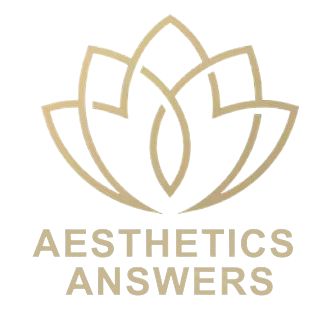The Ultimate Guide to Stretch Mark Reduction: What Really Works?
Stretch marks are a common concern for many people in the UK. Whether you’ve developed them during pregnancy, rapid weight changes, or growth spurts, you’re not alone in seeking effective ways to reduce their appearance. This comprehensive guide will explore various stretch mark reduction methods, from at-home remedies to professional treatments, discussing their effectiveness and suitability for different skin types.
Understanding Stretch Marks
Before diving into reduction methods, it’s crucial to understand what stretch marks are and why they occur.

What Are Stretch Marks?
Stretch marks, or striae, are a form of scarring on the skin. They appear as lines or stripes where the skin has been stretched quickly.
Causes of Stretch Marks
Common causes include:
- Pregnancy
- Rapid weight gain or loss
- Growth spurts during puberty
- Certain medical conditions
Types of Stretch Marks
Stretch marks can vary in appearance depending on their age and your skin type.
New Stretch Marks
Fresh stretch marks often appear reddish or purplish and may feel slightly raised and itchy.
Mature Stretch Marks
Over time, stretch marks tend to fade to a silvery-white colour and become slightly indented.
At-Home Stretch Mark Reduction Methods
Many people prefer to start with at-home treatments before considering professional options. Let’s explore some popular DIY methods.
Topical Treatments
Various skincare products claim to reduce the appearance of stretch marks.
Moisturisers and Oils
Keeping the skin well-hydrated can improve its elasticity and potentially reduce the appearance of stretch marks. Popular options include:
- Cocoa butter
- Shea butter
- Vitamin E oil
- Bio-oil
Retinoid Creams
Over-the-counter retinoid creams may help improve the appearance of newer stretch marks by stimulating collagen production.
Exfoliation
Regular exfoliation can help remove dead skin cells and potentially improve the appearance of stretch marks.
Physical Exfoliation
Use a body scrub or loofah to gently exfoliate the affected areas.
Chemical Exfoliation
Alpha-hydroxy acids (AHAs) or beta-hydroxy acids (BHAs) can help exfoliate the skin and potentially improve texture.
Lifestyle Changes
Some lifestyle adjustments may help prevent new stretch marks and improve the appearance of existing ones.
Hydration
Drinking plenty of water helps keep your skin hydrated and elastic.
Balanced Diet
A diet rich in vitamins C, D, E, zinc, and protein can support skin health.
Professional Stretch Mark Reduction Treatments
For more significant results, professional treatments may be worth considering.
Microneedling
Microneedling, also known as collagen induction therapy, involves using tiny needles to create controlled micro-injuries in the skin, stimulating collagen production.
How It Works
The micro-injuries trigger the skin’s natural healing process, potentially improving the appearance of stretch marks.
Effectiveness
Microneedling can be effective for both new and old stretch marks, though multiple sessions are typically required.
Laser Treatments
Laser treatments use focused light energy to target stretch marks and stimulate collagen production.
Fractional Laser for Stretch Marks
This type of laser treatment creates microscopic wounds in the skin, encouraging new tissue growth.
Pulsed Dye Laser
Particularly effective for newer, reddish stretch marks, this laser targets blood vessels to reduce redness.
Chemical Peels
Chemical peels involve applying a solution to the skin to remove the top layers, potentially improving the appearance of stretch marks.
Types of Chemical Peels
Different strengths are available, from superficial to deep peels, depending on the severity of the stretch marks.
Recovery Time
Recovery time varies based on the depth of the peel, ranging from a few days to several weeks.
Choosing the Right Treatment
Selecting the most suitable stretch mark reduction method depends on various factors.
Factors to Consider
When deciding on a treatment, take into account:
- Age and colour of your stretch marks
- Your skin type and tone
- Budget and time constraints
- Desired results and expectations
Consultation with a Professional
For the best results, it’s advisable to consult with a qualified aesthetic practitioner. They can assess your individual case and recommend the most suitable treatment plan.
What to Expect During a Consultation
A thorough consultation should include:
- Assessment of your stretch marks
- Discussion of your medical history
- Explanation of suitable treatment options
- Information about potential risks and side effects
Managing Expectations
It’s important to have realistic expectations when it comes to stretch mark reduction.
Treatment Outcomes
While many treatments can significantly improve the appearance of stretch marks, complete removal is often not possible.
Gradual Improvement
Most treatments require multiple sessions and results develop gradually over time.
Maintenance
Ongoing maintenance may be necessary to preserve the results of your chosen treatment.
Preventative Measures
While not all stretch marks can be prevented, there are steps you can take to minimise their occurrence.
During Pregnancy
Pregnant women can take certain precautions to reduce the likelihood of developing stretch marks.
Gradual Weight Gain
Aim for steady, gradual weight gain as recommended by your healthcare provider.
Regular Moisturising
Keep your skin well-hydrated, particularly in areas prone to stretch marks.
During Weight Changes
If you’re losing or gaining weight, try to do so gradually to give your skin time to adjust.
Strength Training
Incorporating strength training into your fitness routine can help maintain skin elasticity.
Stretch marks are a common skin concern, but with the right approach, their appearance can often be improved. Whether you opt for at-home remedies or professional treatments, consistency and patience are key. Remember to consult with a qualified practitioner to determine the best course of action for your individual needs. With the information in this guide, you’re now better equipped to make informed decisions about stretch mark reduction and take steps towards achieving smoother, more even-toned skin.
